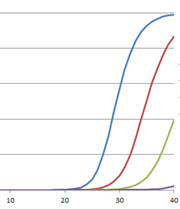Today’s blog is written by guest blogger, Gabriela Saldanha, Senior Product Marketing Manager at Promega.
Quantitative PCR (qPCR) is an indispensable tool for nucleic acid analysis, widely used in research, clinical diagnostics and applied sciences. Its sensitivity and specificity make it a powerful method for detecting and quantifying DNA and RNA targets. However, qPCR reactions are highly susceptible to inhibitors—substances that interfere with enzyme activity, primer binding, or fluorescent signal detection. These inhibitors can originate from biological samples, environmental contaminants, or laboratory reagents, potentially leading to inaccurate quantification, poor amplification efficiency, or complete reaction failure.

